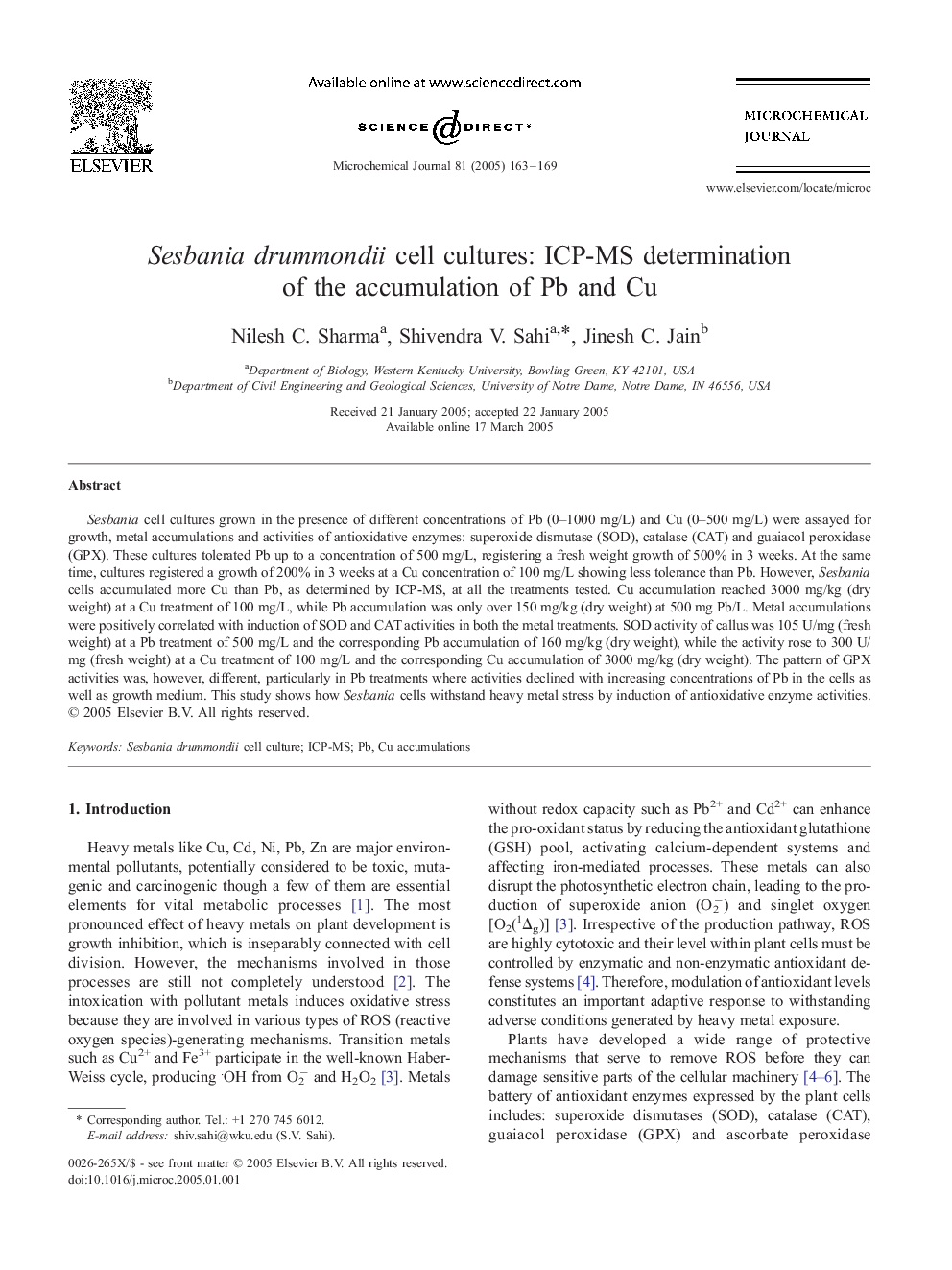| Article ID | Journal | Published Year | Pages | File Type |
|---|---|---|---|---|
| 10557233 | Microchemical Journal | 2005 | 7 Pages |
Abstract
Sesbania cell cultures grown in the presence of different concentrations of Pb (0-1000 mg/L) and Cu (0-500 mg/L) were assayed for growth, metal accumulations and activities of antioxidative enzymes: superoxide dismutase (SOD), catalase (CAT) and guaiacol peroxidase (GPX). These cultures tolerated Pb up to a concentration of 500 mg/L, registering a fresh weight growth of 500% in 3 weeks. At the same time, cultures registered a growth of 200% in 3 weeks at a Cu concentration of 100 mg/L showing less tolerance than Pb. However, Sesbania cells accumulated more Cu than Pb, as determined by ICP-MS, at all the treatments tested. Cu accumulation reached 3000 mg/kg (dry weight) at a Cu treatment of 100 mg/L, while Pb accumulation was only over 150 mg/kg (dry weight) at 500 mg Pb/L. Metal accumulations were positively correlated with induction of SOD and CAT activities in both the metal treatments. SOD activity of callus was 105 U/mg (fresh weight) at a Pb treatment of 500 mg/L and the corresponding Pb accumulation of 160 mg/kg (dry weight), while the activity rose to 300 U/mg (fresh weight) at a Cu treatment of 100 mg/L and the corresponding Cu accumulation of 3000 mg/kg (dry weight). The pattern of GPX activities was, however, different, particularly in Pb treatments where activities declined with increasing concentrations of Pb in the cells as well as growth medium. This study shows how Sesbania cells withstand heavy metal stress by induction of antioxidative enzyme activities.
Keywords
Related Topics
Physical Sciences and Engineering
Chemistry
Analytical Chemistry
Authors
Nilesh C. Sharma, Shivendra V. Sahi, Jinesh C. Jain,
